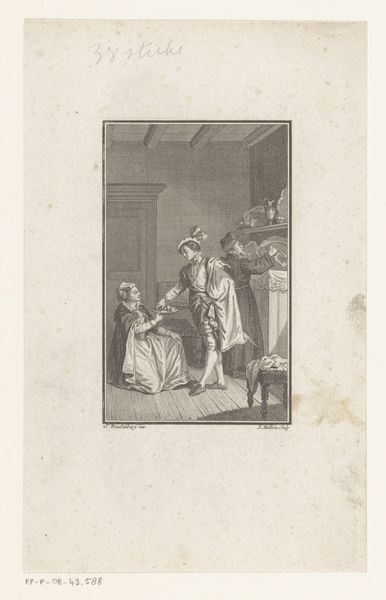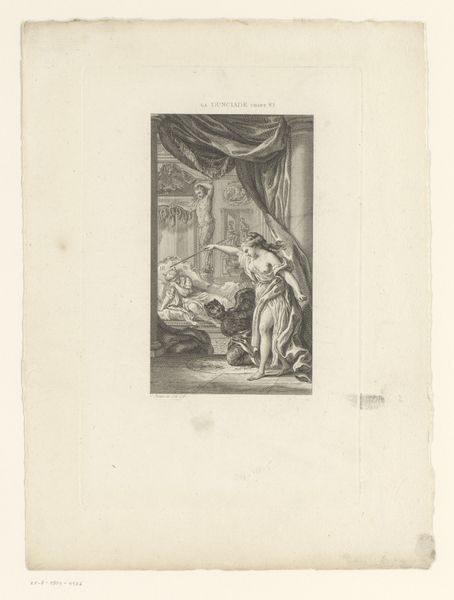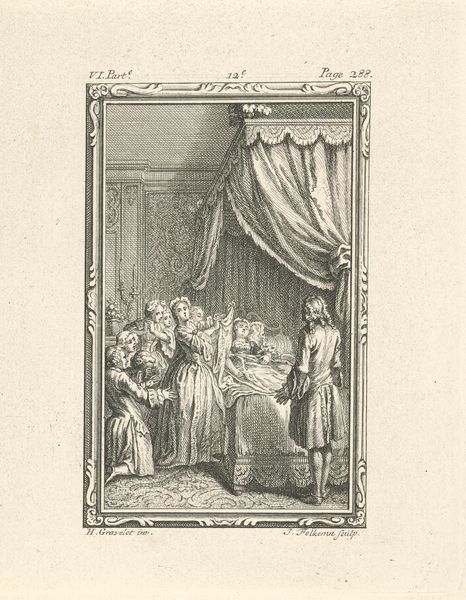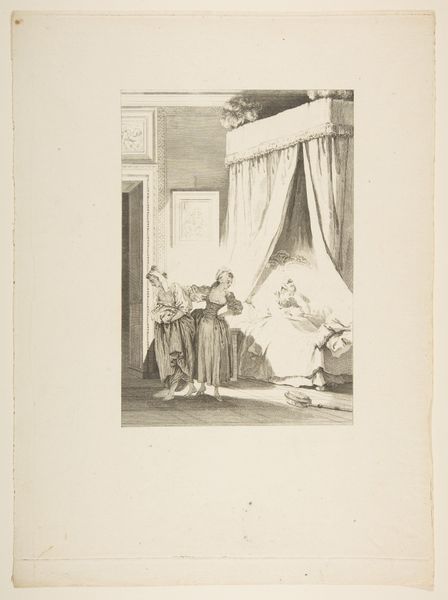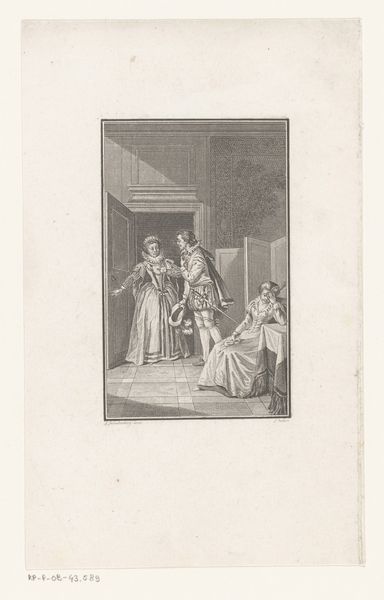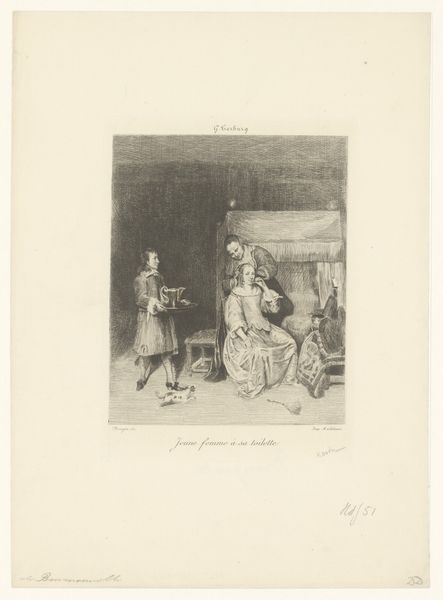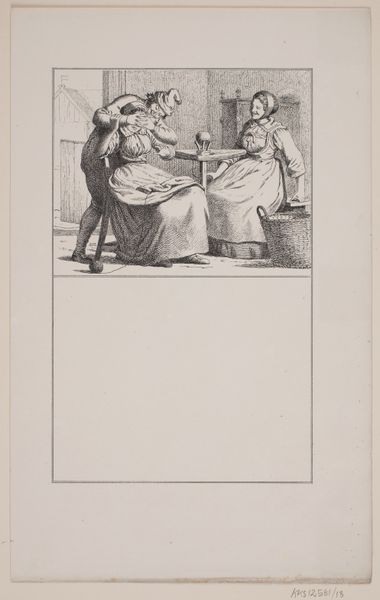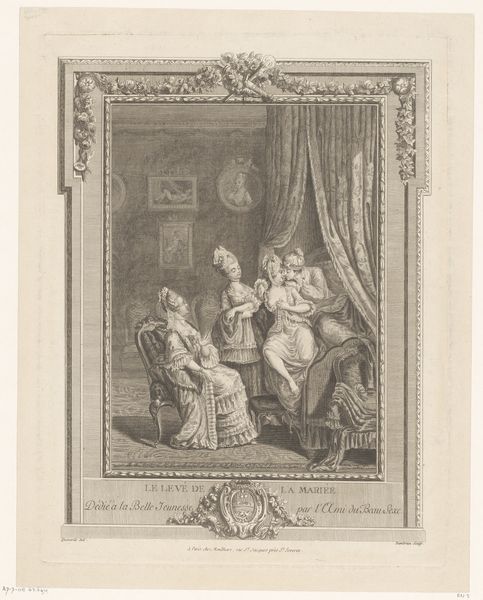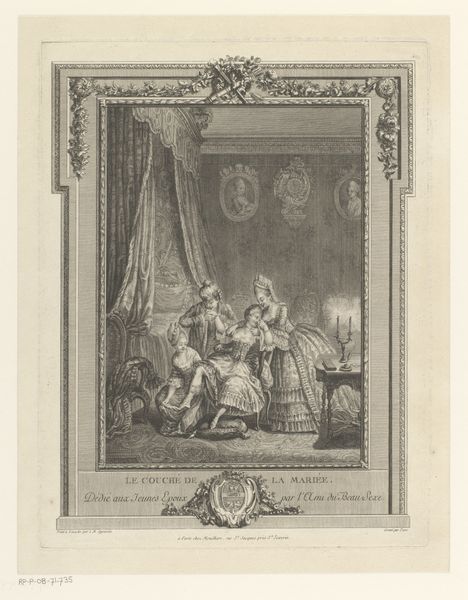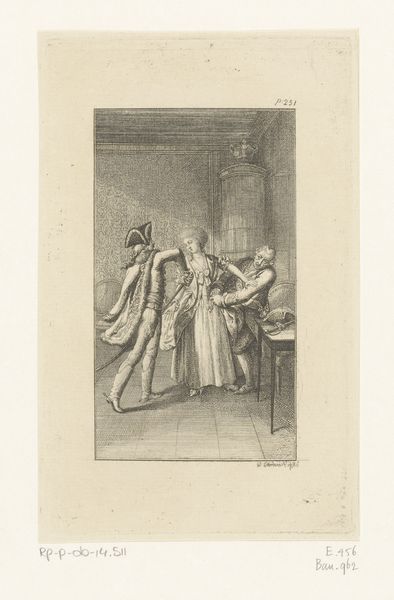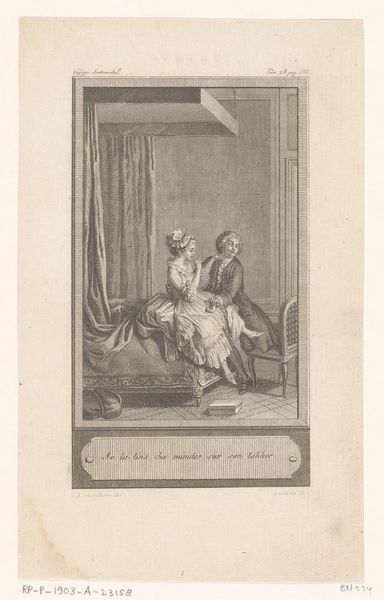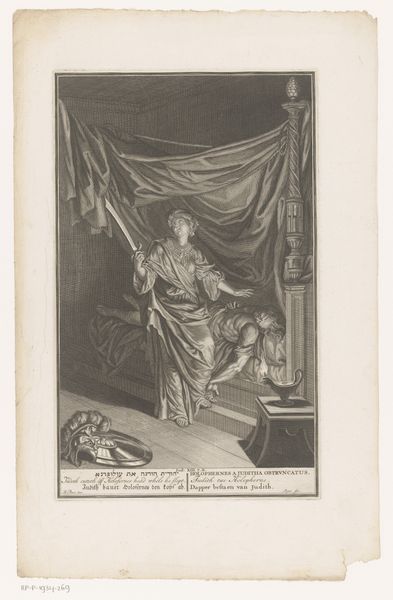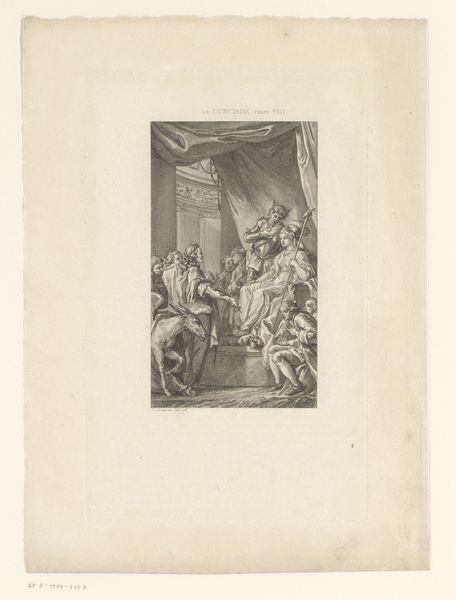
Dimensions: height 185 mm, width 117 mm
Copyright: Rijks Museum: Open Domain
Marie-Elisabeth Thibault presents two women in an intimate interior, where the draped bed is a prominent symbol. The bed, beyond its obvious function, represents a space of vulnerability, dreams, and secrets. We see this motif echoing through time, from ancient Egyptian sarcophagi adorned with protective deities, to Renaissance paintings where beds are stages for annunciations and revelations. Even in modern cinema, the bed remains a charged space, a silent witness to pivotal moments. Consider the gesture of the woman clutching her chest; it’s a universal sign of distress or anxiety. This gesture surfaces in countless works, from depictions of the Madonna grieving to figures in Edvard Munch’s paintings expressing existential angst. It taps into our shared understanding of human emotion, triggering empathy and recognition on a subconscious level. This collective memory influences how we interpret such gestures, imbuing them with layers of meaning accumulated over centuries. The bed, like these gestures, invites us to contemplate the cyclical nature of human experience. Each symbol resurfaces, transformed yet fundamentally linked to its origins, reminding us of the enduring power of cultural memory.
Comments
No comments
Be the first to comment and join the conversation on the ultimate creative platform.
